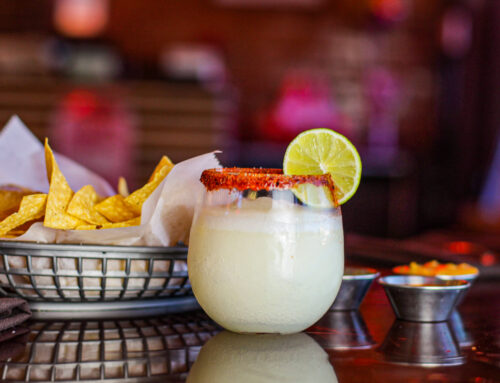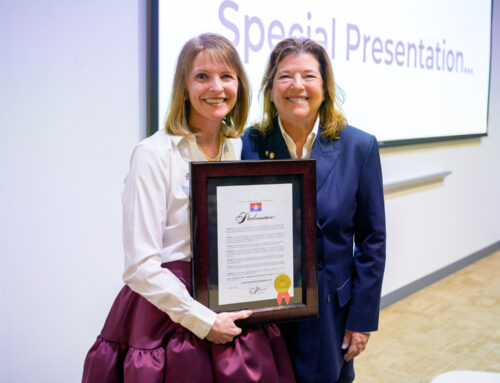Cyclists call it “The Holy Grail.” In the Tour Divide, racing riders begin in the snow-swept mountains of Banff in Alberta, Canada, before embarking on a grueling, 2,745-mile trek south until they reach the blistering deserts of Mexico. This summer, East Dallas neighbor Josh Daugherty began this arduous self-supported cycling journey with a goal to finish the race in less than three weeks. It took him just 18 days, 12 hours and 19 minutes, giving him 12th place in the race and earning him bragging rights as the fastest cyclist in Texas to complete the race.
How far did you have to ride each day to reach your goal?
On average I had to ride 135 miles a day, but I was never going to stop because I reached 135. Because you never know what’s going to happen later on down the road that might stop your day at 75. If I was feeling good, then I rode as hard as I could. I flirted with 200 miles a couple times.
You had to do a lot of climbing as well, right?
It’s not designed to be about climbing, but there are sections that are too hard to ride. You have to hike a bike, as we call it, the stuff that’s too steep or too loose. It could just be a few minutes or half-an-hour until you can get past it.
At what point did you start hurting?
You know going into it that everything is going to hurt by day two or three. I was totally sore. My muscles and joints hurt. My hands hurt. My rear end hurt. For the first week my knees felt like they were being hit by a hammer with every pedal stroke. At night I’d try to sleep and it just felt like they were being squeezed in a vice, just killing me.
With Tour Divide, it’s three to four weeks for most riders. The longest race I’d done before that was Race Across Texas in 2014, and I won that race in five and a half days. With Tour Divide I heard during week two you get a bounce back physically, so I just had to hope that was true, and it was. I can’t explain why. Your body adapts to what you’re doing to it.
Worst injury?
On day 11, I strained my quad in Wyoming. It was an issue, and I needed to ice it as often as I could after that.
The other things that you expect are numb hands and feet. My hands are still tingly, and they will be for probably four to six weeks. Saddle sores are a big one. Everybody gets them. By the end of week two, I bled. You just have to try not to get infected. The things that knock people out of races the most are knees, Achilles pain and saddle sores.
Where did you sleep?
I slept on the side of the road a lot. I took a tent. Most of the guys used bivy sacks, and they might have been a little faster to set up and break down, but I felt like I got better sleep. If bad weather hits, it’s a lot better in a tent. Another bike packing thing is to sleep in bathrooms in state parks. I would have, if I came across one. I’ve done it before. One night I slept in a post office because post offices are open 24/7.
Sometimes I slept in motels. After I strained my quad, I slept in a motel every chance I got, but that was still only three or four times. I never stopped early because I was in a town, but if I could go long to get to a town then I would. A couple times I’d ride until 3 or 4 in the morning to get to a town with a motel. I was shooting for five hours of sleep at night, and that way I could ice my quad and prop my feet up.
Since you had to pack as light as possible, how’d you manage food?
You have to carry two days’ worth of food. Most days I hit a convenience store. Some days I didn’t. The route is designed to be remote and away from traffic. So a lot of the towns you cross, if they have a convenience store, then you’re lucky. Ninety percent of your food comes from gas stations and convenience stores. A restaurant is harder to come by, and you have to hit it at the right time because in small towns they might only be open from 8:30 a.m. to 6 p.m. Most days I got one hot meal. When I would eat at a restaurant, I’d find the biggest meal on the menu and get two of them. Then I’d start eating candy bars about an hour later. I tried to eat every hour.
How to do you deal with the mental and emotional stress?
Ninety percent of the race is mental. The first couple of days it’s exciting and new, and then you start hurting and get tired. Then you just have this huge thing sitting in front of you that isn’t going to be over for a long time. The mental side of it I was expecting. Everyone has their own tricks for how they manage that stuff, but the emotional side of it was way more powerful than I expected. People told me, “You’re going to cry. It’s going to happen.”
The first eight days I rode with people a lot. We’d separate during the day but then hook back up in the evening. Day nine was the turning point for me. I rode away and it was just like a switch flipped and I decided, “I’m going solo.” It was like suddenly the race was on and I was going for my personal best. It was a really emotional moment for me, and I cried. I wish I cried more in real life. Out there it happened every morning. I was never sad or upset. It was just a release. I was just in awe and joyful with how much I appreciate my loved ones and about how happy I was to be having this adventure of a lifetime. All through Wyoming and Colorado, it’s just so beautiful and overwhelmingly huge. I just let my mind wander, and you can’t help but ask yourself questions about your place in the world and why you’re out there and about the people in your life. Everything just comes flooding out. That was the best part of the race. It made it so much more than just a race.
Your wife, Leslee, is also a cyclist?
Yeah, she’s awesome. She wins just about every race she competes in, so she’s super supportive. It’s awesome to have someone who understands.
She’s pregnant right? Did that change things?
Yeah, she’s six months. That was hard. I had planned to do this before she got pregnant. I was already on the mission and then she got pregnant. I asked, “Should I do this or cancel?” She was like, “Without a doubt, you have to go do this.”
What’s next?
People keep asking me if I will do it again. I’d love to, but it takes more than just three to four weeks away from home. It’s a lot of money. It’s six months of training, and then all my vacation time went to this. So those are all sacrifices your family has to make, too. My wife has left the door open, but I just don’t know. I’m really ready to be a dad, so that’s where my focus is right now.





